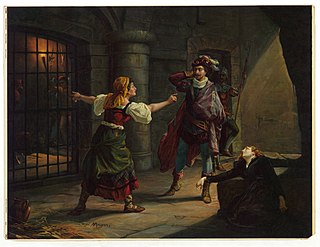
Il trovatore is an opera in four acts by Giuseppe Verdi to an Italian libretto largely written by Salvadore Cammarano, based on the Spanish play El trovador (1836) by Antonio García Gutiérrez. It was García Gutiérrez's most successful play, one which Verdi scholar Julian Budden describes as "a high flown, sprawling melodrama flamboyantly defiant of the Aristotelian unities, packed with all manner of fantastic and bizarre incident."

Barletta is a city and former comune in Apulia, in southeastern Italy. Barletta is the capoluogo, together with Andria and Trani, of the Province of Barletta-Andria-Trani. It has a population of around 94,700 citizens.

Andria is a city and comune (municipality) in the Apulia region of Southern Italy. It is an agricultural and service center, producing wine, olives and almonds. It is the fourth-largest municipality in the Apulia region and the largest municipality of the province of Barletta-Andria-Trani. It is known for the 13th-century Castel del Monte.

The Italian Wars of 1499–1504 are divided into two connected, but distinct phases: the Second Italian War (1499–1501), sometimes known as Louis XII's Italian War, and the Third Italian War (1502–1504) or War over Naples. The first phase was fought for control of the Duchy of Milan by an alliance of Louis XII of France and the Republic of Venice against Ludovico Sforza, the second between Louis and Ferdinand II of Aragon for possession of the Kingdom of Naples.
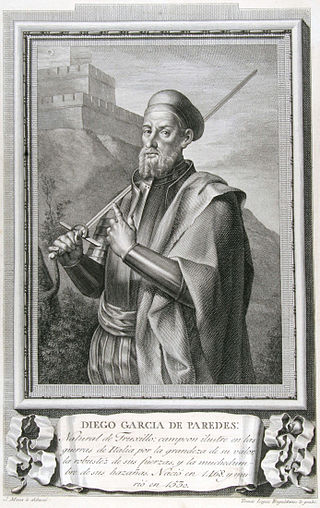
Diego García de Paredes (1468–1533) was a Spanish soldier, mercenary and duelist. He played a distinguished role in the Spanish armies during the Italian Wars, the Mediterranean conflicts against the Ottoman Empire, and the early wars of Emperor Charles V. Known as the "Extremaduran Samson" and the "Spanish Hercules", he was celebrated by his great strength, battle feats and long history of duels, eventually becoming a figure of legend in the Spanish and Italian armies.

I clowns is a 1970 mockumentary film by Federico Fellini about the human fascination with clowns and circuses.

The Challenge of Barletta was a duel fought in the countryside of Trani, near Barletta, Southern Italy, on 13 February 1503, during the Third Italian War, on the plains between Corato and Andria.
Achille Stocchi was an Italian sculptor who worked in Rome in the mid-nineteenth century.
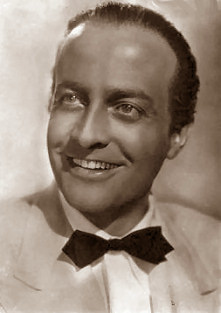
Osvaldo Valenti was an Italian film actor. Valenti starred in several successful Italian movies of the late 1930s and early 1940s, such as the famous The Iron Crown and The Jester's Supper. He appeared in more than 50 films between 1928 and 1945. He and his lover, Luisa Ferida, were executed by partisans in Milan, Italy, due to their links with Fascism. Their story was portrayed in the 2008 film Wild Blood.
Carlo Duse was an Italian film actor. He appeared in more than 80 films between 1916 and 1956. He was born in Udine, Italy and died in Rome, Italy.

Renato Chiantoni was an Italian actor. He appeared in 100 films between 1937 and 1978.

Prospero Colonna (1452–1523), sometimes referred to as Prosper Colonna, was an Italian condottiero who was active during the Italian wars and served France, Spain, the Holy Roman Empire and various Italian states.

Ettore Fieramosca was an Italian condottiero and nobleman during the Italian Wars. His father was Rainaldo, baron of Rocca d'Evandro, and it is thought that his mother was a noblewoman from the Gaetani family. The family inherited and occupied the Castle of Mignano.
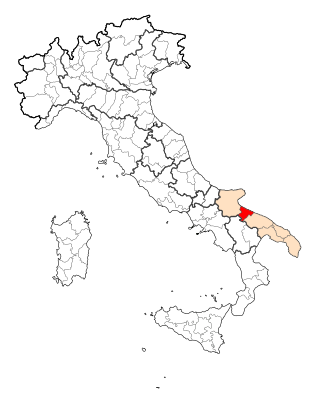
Rosso Barletta is a red Italian wine produced in the Denominazione di origine controllata (DOC) region of Barletta, located in the province of Barletta-Andria-Trani of north-central Apulia. The DOC is permitted to produce red wine only, made primarily from Uva di Troia, and is one of the few wine regions in Italy where Malbec is grown and permitted in a DOC wine. The DOC covers over 60 hectares that are planted to Uva di Troia, Montepulciano, Sangiovese, and Malbec. Rosso Barletta is noted in history for being the spark for a jousting skirmish, now known as the Challenge of Barletta, involving thirteen local Italian knights against thirteen French knights, following an evening of drinking too much Barletta wine. According to the Italian Trade Commission, when the wine region was officially recognised it retained the name Rosso Barletta in commemoration of the historic connection between the region's wine and the event.
Italian martial arts include all those unarmed and armed fighting arts popular in Italy between the Bronze age until the 19th century AD. It involved the usage of weapons. Each weapon is the product of a specific historical era. The swords used in Italian martial arts range from the Bronze daggers of the Nuragic times to the gladius of the Roman legionaries to swords which were developed during the renaissance, the baroque era and later. Short blades range from medieval daggers to the liccasapuni Sicilian duelling knife.
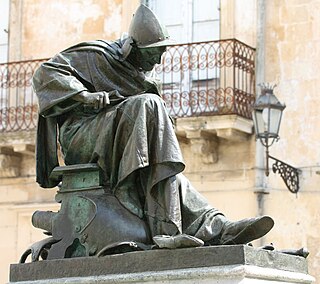
Bartolomeo Fanfulla was an Italian condottiero.

Ettore Fieramosca is a 1938 Italian historical film directed by Alessandro Blasetti and starring Gino Cervi, Mario Ferrari and Elisa Cegani. It is adapted from the 1833 novel of the same title by Massimo D'Azeglio, based on the life of the 16th century condottiero Ettore Fieramosca.

Mario Ferrari was an Italian film actor. After making his debut in 1920, Ferrari became a mainstay of Italian cinema during the Fascist era appearing in a mixture of leading and supporting roles. He played the villainous Graiano d'Asti in the historical film Ettore Fieramosca (1938). Ferrari continued to work regularly in the post-Second World War years.

The Battle of Capo d'Orso, sometimes known as the Battle of Cava and the Battle of Amalfi, was a naval engagement taking place from 5:00 PM to 9:00 PM on April 28 1528, during the War of the League of Cognac. A French fleet inflicted a crushing defeat on the fleet of the Kingdom of Naples under Spanish command in the Gulf of Salerno, where Spanish forces trying to break the French blockade of the city met the French fleet.

Mario Gallina was an Italian actor and voice actor.

















